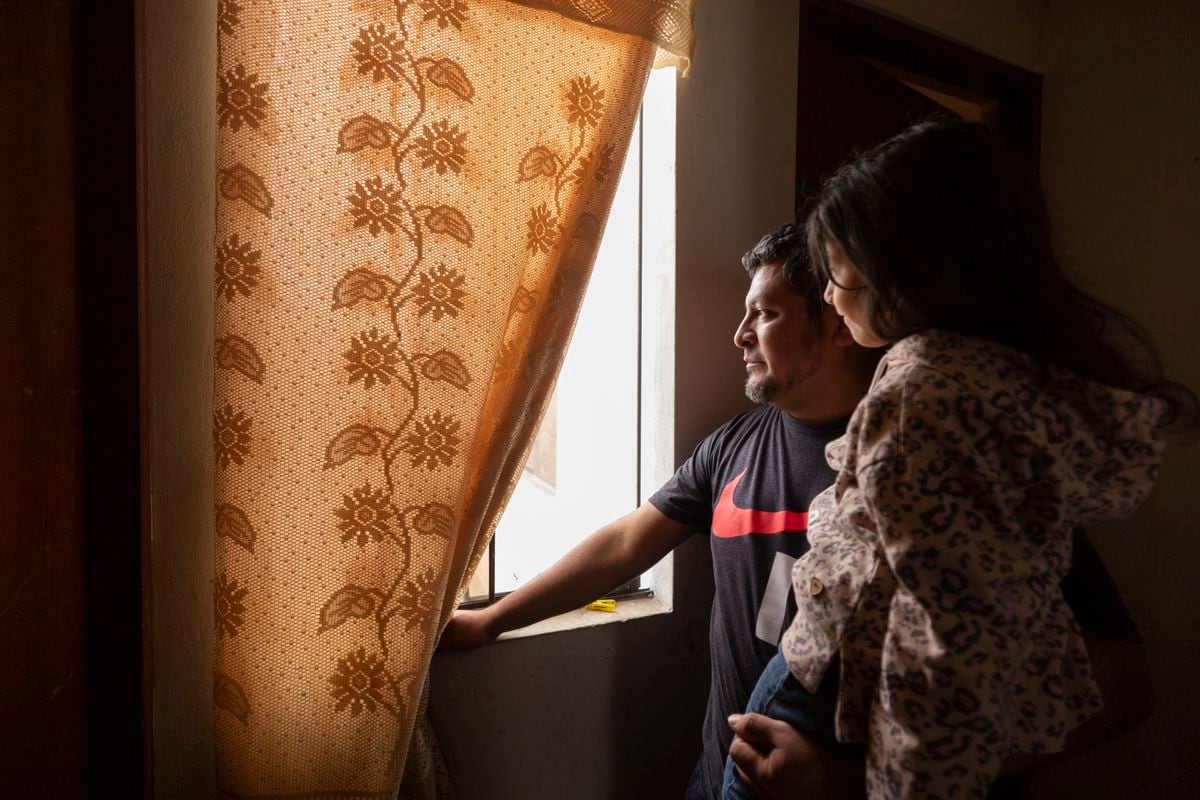EL PAÍS offers the América Futura section openly for its daily and global informative contribution on sustainable development.
If you want to support our journalism, subscribe
here
.
Julio lives in Quito, Ecuador.
He is an economist, he has just turned 30 and, although he has been working formally as a public official for almost a decade, he believes it is impossible that one day he will be able to achieve the postponed dream of owning a home.
“Don't even think about it.
I prefer to rent and pray that at some point the prices of the apartments go down, ”he says.
Jonathan is 35 years old, he is from Lima, Peru and, unlike Julio, he did not have access to higher education, he works as a doorman in a building in Miraflores, an upper-class district of Lima, and lives in a rented mini-apartment 20 kilometers from his home. work with his wife and children.
On the idea of buying a house in the near future, Jonathan responds without enthusiasm: “It's super difficult for me.
The most I aspire to is to buy a piece of land and gradually build a house.”
The two are children of a continent that in the last 50 years has grown exponentially, in such a disorderly and unplanned way, that it seems to have taken away from its young people the dream of accessing decent home ownership.
Jonathan rests in his rented mini-apartment in Lima.Leandro Britto
For Francisco Sabatini, a Chilean sociologist, doctor in Urban Planning from the University of California, and professor at the University of Bío-Bío, the industrialization of the global economy and the application of free market policies in Latin America in the last 30 years have supposed an unprecedented urban explosion that has resulted in disorderly growth and without sustainable urban planning, generating deep social gaps and a serious problem, both in the difficulty of the population to access housing, as in the prevalence of precarious settlements and illegal or informal occupation of land.
“Unfortunately, global neoliberal economic policies, added to the financial crises of recent decades, have made housing cease to be merely a physical asset and also become the financial asset that earns the most today.
And this has caused land and housing prices to skyrocket, denying millions the opportunity to access their own home," explains Sabatini, who adds that, unlike Europe or the United States, in Latin America there is no tradition of powerful rental market and yes, on the other hand, access to home ownership, whether illegally or legally.
According to the expert, this happens because historically our countries have had inflationary, unstable economies that generate financial insecurity for families, especially the poorest.
“For the Latin American,
housing is much more than a home, a good or a financial asset.
It is life insurance and, at the same time, a pension and what you are going to leave to your children”, he comments.
Urban explosion and informal occupation
According to a study by the United Nations Human Settlements Program (UN) entitled
State of the cities of Latin America and the Caribbean
of 2012, the overwhelming growth of the region in the previous 50 years meant that, between 1970 and 2000 alone, the population in Latin American cities increased by 240%.
In turn, according to projections by the United Nations Economic Commission for Latin America and the Caribbean (ECLAC), one in five inhabitants of Latin America and the Caribbean lives in informal settlements.
The
2017 Economy and Development Report
by CAF-Development Bank of Latin America reveals, on the other hand, that Latin American households would need more than 30 years of savings to purchase a 60-square-meter median-priced home, assuming they allocate the 30% of your income to the consumption of housing services.
For Álvaro Espinoza, economist and associate researcher in the Urbanization and Sustainable Cities work area of the Development Analysis Group (Grade), the transformation of the dynamics of access to housing is closely related to the growing impossibility of finding available land in the urban centers of the main cities of the region.
“Three decades ago, young people arrived, invaded and built informally in areas close to urban centers, where the job offer, studies and services are concentrated.
It was the only option for low-income families to access their own home.
Today the panorama is different: without available land near the cities, the solution of invading loses its appeal due to the costs associated with transportation and time”, says Espinoza,
Jonathan walks in a park near his home in the district of Villa El Salvador, in Lima, on October 1, 2022. Leandro Britto
The case of the middle class, which has grown exponentially in the region in the last 30 years, is similar, although it responds to different causes.
Espinoza affirms that the informality and precariousness of formal work have meant that young people have less access to financing.
“In the 1980s, throughout Latin America, hyperinflation caused mortgage loans to disappear and thus, all of a sudden, massive housing production ended.
Almost forty years later, we see the consequences”, explains the economist.
Peruvian sociologist Julio Calderón Cockburn explains that the new urban policies in Latin America applied in the 1990s left aside the model of the construction State, which acquired land, developed enterprises and implemented financial mechanisms for demand.
This was replaced by housing subsidies that were applied based on demand in countries such as Chile, Mexico and Peru, or by a charge-benefit system (in the form of surplus value) as happened in Colombia, which allows the State to capture funds for new projects.
“The problem with the demand subsidy is that the price of formal land grows and, in order to maintain profitability and not lose the subsidy bonus, real estate companies build low-income housing far from urban centers.
So we see how in Mexico there is talk of five million social housing units that were awarded but not occupied.
Because people don't want to live 20 kilometers from the city, and prefer to go to the centers to live in rented rooms, or build a new apartment in their parents' house," says Calderón, who believes that this policy was insufficient to address the housing deficit.
More information
Ana Falú: "In a world made for white men it is necessary to feminize architecture"
Rental housing: desperate solution?
Francisco Sabatini believes that, faced with the impossibility of accessing one's own home, a trend that could continue to accelerate, the path to follow is clear: the promotion of the housing rental or rental market in the region, a conclusion to which he also The Chilean Chamber of Construction and the World Bank have recently arrived.
However, the expert warns that a massive housing rental policy could be compared to labor flexibility.
“On the one hand, it stimulates the economy, but on the other hand, it generates a significant decrease in the quality of life of many people,” he points out.
"I believe in rental housing, but not as an alternative to ownership."
For Aldo Facho, urban architect and co-founder of the Latin American Network of Urbanists, a better rental policy could not only largely solve the problem of access to housing, but also respond to new social dynamics of habitability.
“Here, in Argentina, middle-class youth see the possibility of accessing a purchased house as far away, that they are more focused on consuming, traveling, renting and moving.
And this happens because there is more and more incentive for mobility”, says Facho.
Furthermore, he believes that this model is better suited to new family structures.
"The model of getting married, buying a house, having four children and living all your life in the same property is part of the past," explains the urban planner.
“Now people get together, separate, travel, remarry and have fewer children.






/cloudfront-eu-central-1.images.arcpublishing.com/prisa/FVXWW4XDH5BWDFX47AT65FDXDM.jpg)


